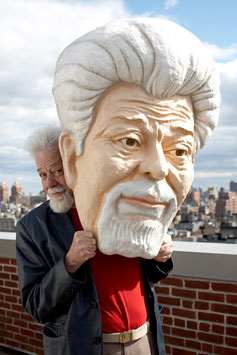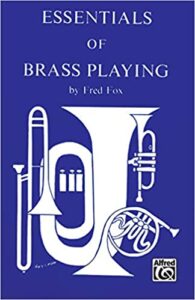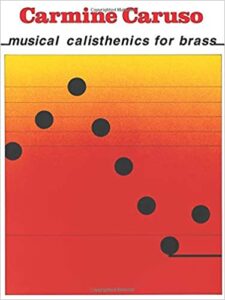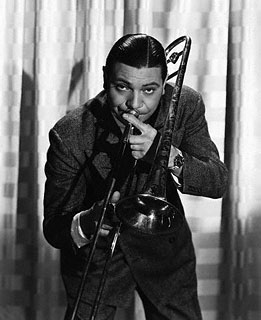
The trombonist Roswell Rudd is up to a new project: recording an album of standards. Help Mr. Rudd out by visiting the link below and adding your bit of support.
Roswell Rudd Records An Album Of Standards by Roswell Rudd — Kickstarter.


The trombonist Roswell Rudd is up to a new project: recording an album of standards. Help Mr. Rudd out by visiting the link below and adding your bit of support.
Roswell Rudd Records An Album Of Standards by Roswell Rudd — Kickstarter.

I’ve been using it since summer last, and Yamaha Slide Oil does a fine job of lubricating my trombone slide. But — no doubt like many people — I sometimes get concerned about the possible toxicity of substances I use on a regular basis. This slide “oil” (actually a soapy-looking concoction), works great, but what’s in it? I couldn’t find the information on the internet, even on Yamaha’s own website. They did have a web form for inquiries, so I wrote in:
Hello:
My question is about Yamaha Slide Oil — is it possible to list its ingredients? I’m interested in the oil’s relative toxicity to humans. Thanks, Chris
In a while, I received an email from a helpful product manager at Yamaha. He included a fairly standard Material Data Safety Sheet. To cut right to the chase, Yamaha Slide Oil doesn’t contain anything that is an eye, skin, or inhalation irritant. Although practically non-toxic, Yamaha Slide Oil should not be ingested because doing so could give you abdominal cramps and diarrhea. Insert you own TV dinner and/or Hot Pockets joke here.
The basic ingredients found in Yamaha Slide Oil:
05/26/23 5:28 PM: A more recent revision of the data sheet for Yamaha Trombone Slide Lubricant can be found here.

Next in my list of edifying brass texts is Essentials of Brass Playing by Fred Fox. I like this book. Fox’s method might be summed up in his teaching slogan, “Eternal Vigilance.” He stresses that attention to details is what makes for excellent performance on a brass instrument, and likens mastery of these details to knowing a correct safe combination. Fox explains that the right way is the easiest way and eliminates the need for brute force (like blowing up the safe).
While there are few picture-illustrations in Essentials of Brass Playing, Fox uses his strong grasp of simile and metaphor to get his ideas across, and he uses his own descriptive names like “Accordion Effect,” “Hydraulic Effect,” or “Fourth Gear” to illustrate many of his concepts. When it comes to the production of brass sounds, these comparisons encourage the reader to think about cause and effect. Here, for example, is part of Fox’s discussion of the air column from early in the book:
Brass players usually believe, quite mistakenly, that they must literally blow the sounds out of the instrument. This is natural and very common misconception.
The purpose of the air is to pass between the tensed lips and make them vibrate. It is similar to a bow that passes across the string of a violin to make the string vibrate. True, more air is used to get a larger lip vibration, and thus play louder. In the same manner, more bow pressure is used on a string to produce a louder sound. But it should be observed that even when the violin sounds louder there is no rush of air past the strings. Similarly, with any other non-wind instrument, such as piano, tympani, or even loud speaker (which can reproduce recorded brass sounds), the rush of air is no factor in the volume of the speaker sounds.
Interestingly, Fox defines “diaphragm” in his own way:
For our purposes I consider the upper abdominal area the upper diaphragm and the lower abdominal area the lower diaphragm.
For firm, full-bodied notes, whether played loud or soft, the upper diaphragm must remain under tension as long as a note or phrase is played …
While Fox isn’t incredibly explicit about forming an embouchure, these main points come through strongly throughout the text:
Essentials of Brass Playing covers every technical aspect of brass performance and a few non-technical aspects as well; it’s highly recommended.

Because it’s mostly true, it has often been said that when it comes to playing a brass instrument, there’s no substitute for a good one-on-one teacher. But it’s also true that people have been playing brass instruments for hundreds of years, and that, consequently, some great teachers have been able to collect their best insights and teaching methods into books. In a series of posts, I’m going to write about some books on brass playing I think are well worth your while. Is all the information you’ll find in these books perfectly consistent? Can you guess what the answer to that question is? I can say you’ll find common threads of wisdom throughout these books. First up, it’s Carmine Caruso’s Musical Calisthenics for Brass.
When I was in high school, I studied with a teacher who was studying with Carmine Caruso [broken link removed] at the time [Warning: clicking on the previous link will cause you to return to the golden glory days of the World Wide Web, back when it was full of stars]. In turn, my teacher taught me many of Caruso’s brass calisthenics. To over-simplify somewhat, Caruso’s teaching and exercises revolve around three things:
In the book, Carmine says this about timing:
It takes over 200 muscles to play a note. It’s important to remember that before you play music you must train your muscles to work together. The key factor is timing: it will determine when the muscles start and stop a certain movement. The type of time is established by tapping the foot to a regular, recurring beat.
You expose the muscles to a physical activity by repetition and timing until the muscles synchronize into a conditioned reflex response …
Caruso’s method also specifies a single setting of the embouchure on the mouthpiece for the duration of each exercise. During rests, the player breathes through the nose in order not to disturb the embouchure setting. The aim is to minimize the unnecessary movement of the muscles so that they can learn what to do. Caruso stresses that these are, after all, calisthenics, and not musical exercises.
What Carmine doesn’t discuss is how to create a embouchure specifically. Here, an embouchure that works — at least to a degree — is a given. This does not preclude the idea that, for a given brass player, a certain embouchure formation may be most efficient and simply “work better.” In my own experience, once I identified embouchure formation that worked well for me, Caruso’s exercises became that much more valuable.
How do you form an embouchure for playing a brass instrument? We’ll undoubtedly come across ideas about that as we proceed through the books I’ll be discussing in the next installment.

UPDATE: 3/20/23: Find Dr. Gordon Vernick’s Jazz Insights here, at Archive dot org.
A while back, I had a little write-up about Gordon Vernick and his Jazz Insights radio show that’s also a podcast. Jazz and trombone aficionados should know that in August, Vernick authored episodes featuring five jazz trombone players of the 20s, including Kid Ory, Miff Mole, Jimmy Harrison, Charlie Green and Jack Teagarden. Another good reason to check the show out.
It’s October, and presumably time to start raking leaves. Despite the date on the calendar, though, it’s still getting up to 80º degrees up here in Minnesota! Whoo-hoo!